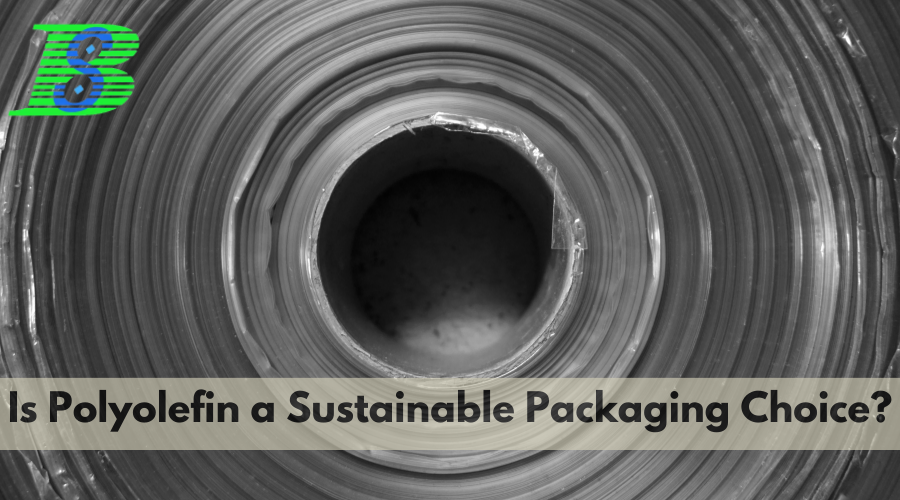Is Polyolefin a Sustainable Packaging Choice?

In today's environmentally conscious world, our choices regarding packaging materials have far-reaching implications. With sustainability at the forefront of consumer and business concerns, the quest for eco-friendly packaging solutions is more pressing than ever. One material that has been gaining attention is Polyolefin. But is Polyolefin a sustainable packaging choice? Let's delve deep into this subject to understand its environmental impact, benefits, and drawbacks.
Polyolefin: The Sustainable Packaging Contender
Polyolefin, a versatile polymer made from simple hydrocarbons, has emerged as a viable option in sustainable packaging. Its unique properties and adaptability make it attractive for businesses looking to reduce their environmental footprint.
Understanding Polyolefin
Polyolefin encompasses a family of polymers, including polyethylene and polypropylene. These materials are derived from petrochemical sources but are highly recyclable and can be repurposed for various applications, including packaging.
Eco-Friendly Advantages
1. Recyclability
Polyolefin packaging is easily recyclable, contributing to the circular economy. It can be melted down and reformed into new products, reducing the need for virgin plastic production.
2. Energy Efficiency
Polyolefin's production consumes less energy than other plastics, making it a greener choice in manufacturing.
3. Low Carbon Footprint
Polyolefin's lightweight nature results in lower transportation emissions, reducing its overall carbon footprint during distribution.
Is Polyolefin Always Green?
While Polyolefin offers promising eco-friendly advantages, it's essential to acknowledge its limitations and potential environmental drawbacks.
Sustainable Packaging Best Practices
To make an informed choice about Polyolefin as a sustainable packaging option, consider the following best practices:
1. Recycle Responsibly
Encourage and facilitate the recycling of Polyolefin packaging materials to maximize their eco-friendly potential.
2. Explore Alternative Materials
While Polyolefin is a good option, explore other sustainable materials like bioplastics, paper, or glass for specific applications.
3. Reduce Packaging Waste
Design packaging with minimal waste in mind, such as using thinner films or optimizing package sizes.
4. Invest in Research and Development
Support ongoing efforts to improve the sustainability of Polyolefin and discover innovative alternatives.
Specific Applications of Polyolefin
Polyolefin is a versatile material with various applications in sustainable packaging due to its eco-friendly properties. Here are some specific applications where Polyolefin is a good option for sustainable packaging:
- Food Packaging: Polyolefin, including shrink wraps and films, is commonly used for food packaging. It provides a protective barrier to maintain food freshness, reducing food waste. Its safety for direct contact with food and recyclability make it a sustainable choice.
- Beverage Multipacks: Polyolefin shrink films are ideal for packaging beverage multipacks, such as bottled water or canned beverages. They provide excellent stability and tamper resistance while reducing plastic waste compared to traditional packaging.
- Pharmaceuticals: Polyolefin films are used for packaging pharmaceutical products. They ensure product safety and integrity, are tamper-evident, and meet regulatory requirements. Polyolefin's recyclability is essential for pharmaceutical companies aiming to reduce their environmental footprint.
- Cosmetics and Personal Care: Polyolefin packaging suits cosmetics and personal care products, offering product protection and aesthetic appeal. It can be designed to include printed branding and product information.
- Electronics: Polyolefin materials are used to protect electronics during shipping and storage. Their durability and resistance to moisture and dust make them an eco-friendly choice for electronic device packaging.
- Retail Products: Polyolefin shrink films package a wide range of retail products, from toys to hardware. They enhance product presentation, reduce packaging waste, and are easily recyclable.
- Promotional Packaging: Polyolefin can be used for promotional packaging, such as gift baskets or holiday bundles. Its transparency and printability allow for attractive displays.
FAQs
Q: Is Polyolefin a fully sustainable choice for packaging?
A: While Polyolefin offers recyclability and energy efficiency, it falls short of being entirely sustainable due to its non-biodegradable nature and petrochemical origins.
Q: Can Polyolefin packaging materials be recycled in my area?
A: The availability of Polyolefin recycling facilities varies by location, so check with your local recycling program for information.
Q: What are the alternatives to Polyolefin for sustainable packaging?
A: Sustainable packaging alternatives include bioplastics, paper, glass, and even innovative materials like mushroom-based packaging.
Q: How can I reduce the environmental impact of Polyolefin packaging?
A: You can reduce the impact by promoting responsible recycling, minimizing waste, and exploring other sustainable materials for specific applications.
Q: Is Polyolefin a cost-effective packaging choice?
A: Polyolefin is generally cost-effective due to its efficient manufacturing process and lightweight properties.
Q: Are there any ongoing developments to make Polyolefin more sustainable?
A: Yes, ongoing research focuses on enhancing Polyolefin's sustainability, from improving recycling processes to reducing its environmental footprint.
Conclusion
In the quest for sustainable packaging solutions, Polyolefin emerges as a strong contender. Its recyclability, energy efficiency, and low carbon footprint make it a promising choice. However, it's crucial to recognize that packaging material has drawbacks. Polyolefin's non-biodegradability and association with fossil fuels are essential factors to consider. Promoting responsible recycling, exploring alternative materials, and investing in research and development are necessary to make Polyolefin a genuinely sustainable packaging choice. By doing so, we can unlock the full potential of Polyolefin and contribute to a greener, more sustainable future.


